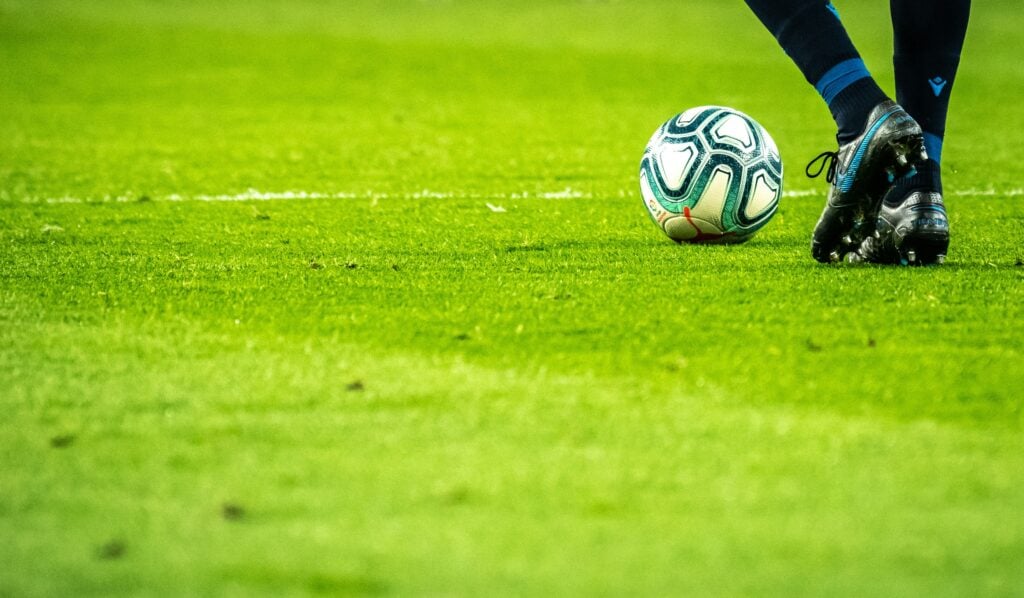
Chelsea vs Tottenham Hotspur Prediction Betting Tips & Preview
Date: 03/04/25Kick-off time: 20:00Venue: Stamford BridgeThe highly anticipated Premier League clash between FC Chelsea and Tottenham Hotspur is set to take place on Thursday at…
While poker is a mind sport and football is a physical sport, they do have a lot in common, including competition and strategy being at the core of both sports. As the most popular sport in the world, football has amassed a global following and is known for being a sport that requires physical endurance, tactical awareness, and teamwork. With two teams of eleven players trying to get the ball into the opposing net, football emphasises skill, speed, and strategic planning.
When it comes to poker, things are a bit different. Poker isn’t a team sport; instead, it features individuals facing off against one another in a game known for its strategic depth and mental challenge. A poker player must wear many hats and be able to outmanoeuvre their opponents through skilful betting, bluffing, and reading of the game and other players. Unlike football, poker emphasises mental endurance, psychological insight, and risk management.
Given these differences, it might be hard to believe football can learn anything from poker. That is until you think about the most famous skill in poker — bluffing. When a player bluffs, they act in a way that suggests they have a stronger hand than they really do. While that might seem easy to do in theory, in practice, bluffing is one of the most difficult skills to master.
A successful bluff involves understanding an opponent’s habits, getting the timing just right, and being able to exude confidence in a believable way. It’s an advanced poker strategy and separates casuals from professionals. In this article, we look at how bluffing strategies from poker can be applied to football to enhance game tactics and player performance.
In poker, when a player draws a weak hand, bluffing is a strategy they can use to convince players with stronger hands to fold. It involves the player with a weak hand betting or raising as if they were playing with a much stronger hand, creating a false impression of their hand’s strength. When a player bluffs, their goal is to win the pot without ever revealing the cards.
Bluffing may seem easy enough, but in practice, the player must get the timing just right and understand the situations where this technique works best. They also need to have a talent for reading other players and understanding their playing styles and habits, as this information will come in handy when predicting their reactions.

Whilst not referred to as bluffing, unpredictability and deception play an important role in football, allowing teams to break down defence and create opportunities to score. Feints, dummy runs, and unexpected passes are all examples of deceptive tactics that keep opponents guessing and create spaces for attack. Legendary footballer Johan Cruyff popularised the “Cruyff Turn,” a feint move that misleads defenders and opens up new angles for play.
Lionel Messi’s body feints are iconic, deceptive plays used to outmanoeuvre defenders. The same goes for Ronaldinho’s no-look pass, which he masterfully used to catch opponents off guard. While it takes a lot of skill to pull off these moves, it also takes a deep understanding of strategy to use deception to manipulate the flow of a game and exploit the defence’s weaknesses. When coaches and players master deceptive techniques, it pays dividends, significantly improving their team’s tactical repertoire.
Footballers already have an arsenal of deception techniques they use to effectively get the upper hand on opponents, but there are still a few things they could incorporate from poker when the right opportunities arise. Coaches can use training to integrate bluffing techniques, practicing deceptive drills with players that focus on misdirection and surprise elements to help players develop these skills so they can use them naturally during gameplay. Potential benefits include improved tactical versatility and the ability to destabilise structured defence. As with any technique, there’s a risk of overusing deceptive tactics, and when this happens, they become predictable, defeating their purpose.
